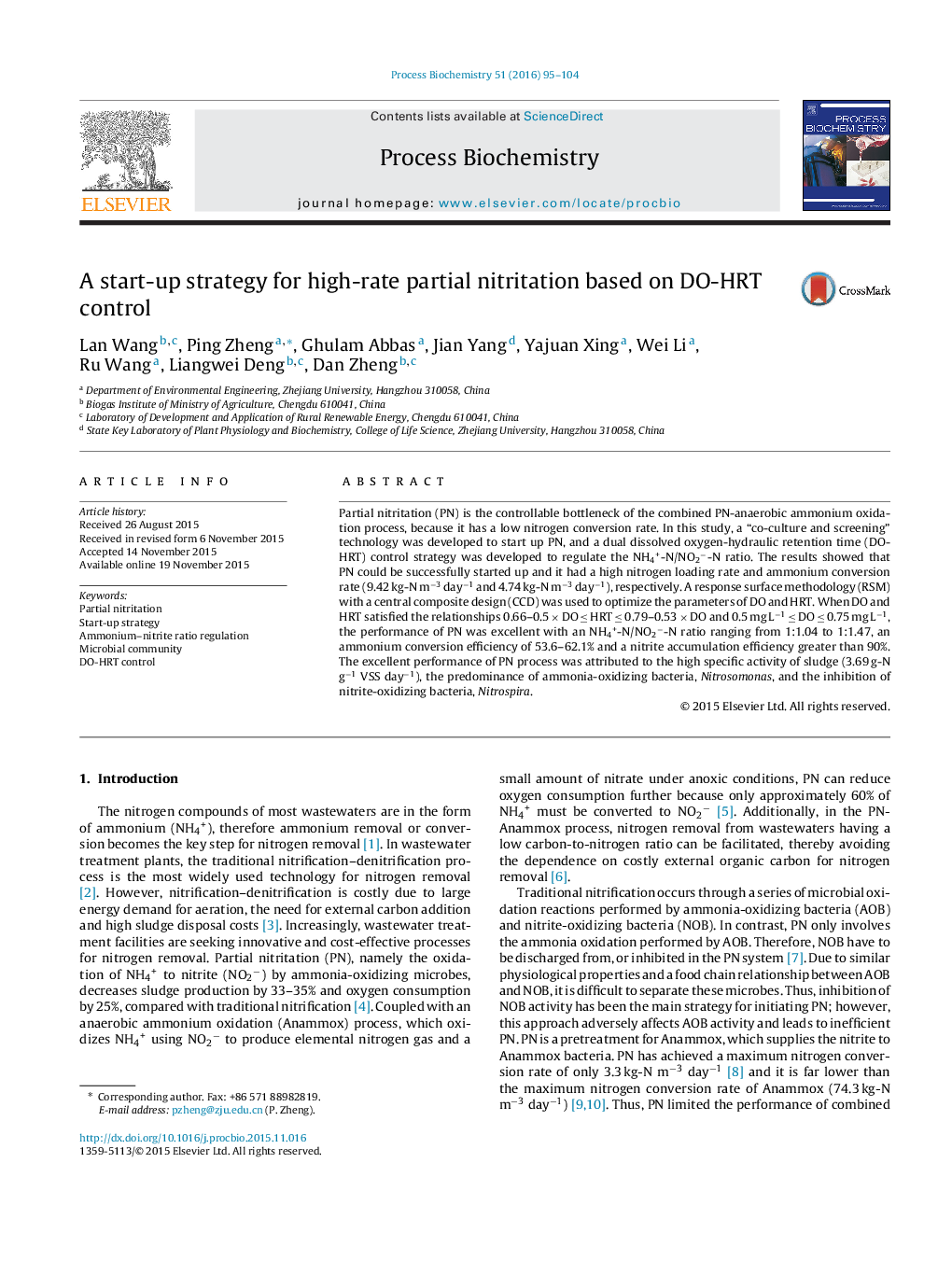| Article ID | Journal | Published Year | Pages | File Type |
|---|---|---|---|---|
| 34242 | Process Biochemistry | 2016 | 10 Pages |
•The PN was started up with ammonium conversion rate of 4.74 kg-N m−3 day−1.•The RSM with CCD was applied to optimize the parameters of DO and HRT.•Good PN performance was ascribed to the high sludge activity (3.69 g-N g−1 VSS day−1).•The transition of predominant microorganisms was investigated by DGGE.•Nitrosomonas was predominant functional microorganisms.
Partial nitritation (PN) is the controllable bottleneck of the combined PN-anaerobic ammonium oxidation process, because it has a low nitrogen conversion rate. In this study, a “co-culture and screening” technology was developed to start up PN, and a dual dissolved oxygen-hydraulic retention time (DO-HRT) control strategy was developed to regulate the NH4+-N/NO2−-N ratio. The results showed that PN could be successfully started up and it had a high nitrogen loading rate and ammonium conversion rate (9.42 kg-N m−3 day−1 and 4.74 kg-N m−3 day−1), respectively. A response surface methodology (RSM) with a central composite design (CCD) was used to optimize the parameters of DO and HRT. When DO and HRT satisfied the relationships 0.66–0.5 × DO ≤ HRT ≤ 0.79–0.53 × DO and 0.5 mg L−1 ≤ DO ≤ 0.75 mg L−1, the performance of PN was excellent with an NH4+-N/NO2−-N ratio ranging from 1:1.04 to 1:1.47, an ammonium conversion efficiency of 53.6–62.1% and a nitrite accumulation efficiency greater than 90%. The excellent performance of PN process was attributed to the high specific activity of sludge (3.69 g-N g−1 VSS day−1), the predominance of ammonia-oxidizing bacteria, Nitrosomonas, and the inhibition of nitrite-oxidizing bacteria, Nitrospira.
Graphical abstractFigure optionsDownload full-size imageDownload as PowerPoint slide
